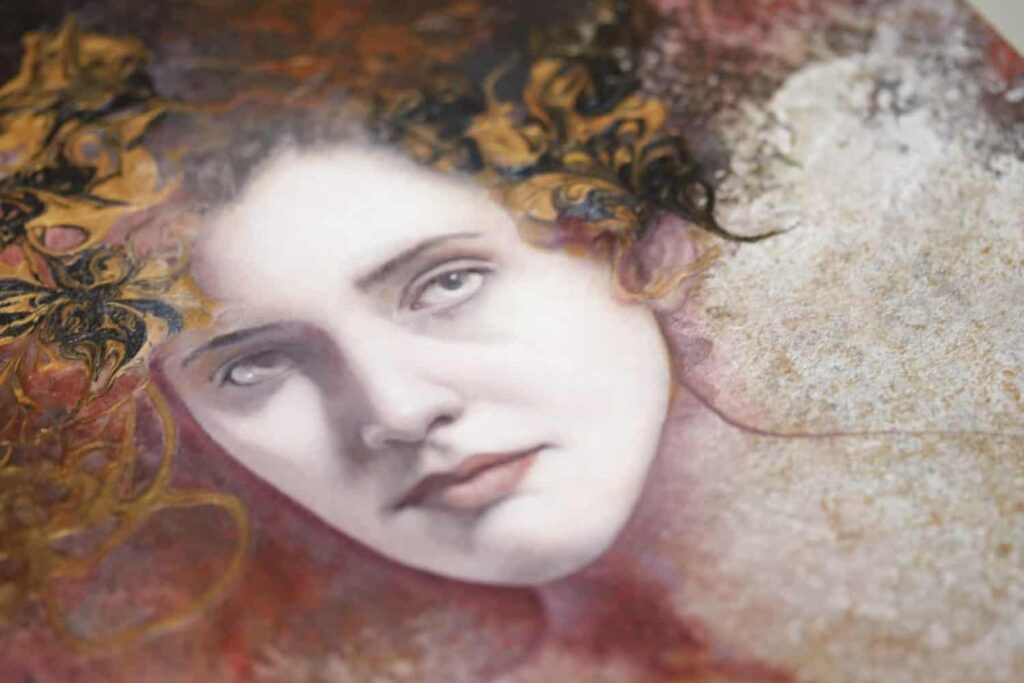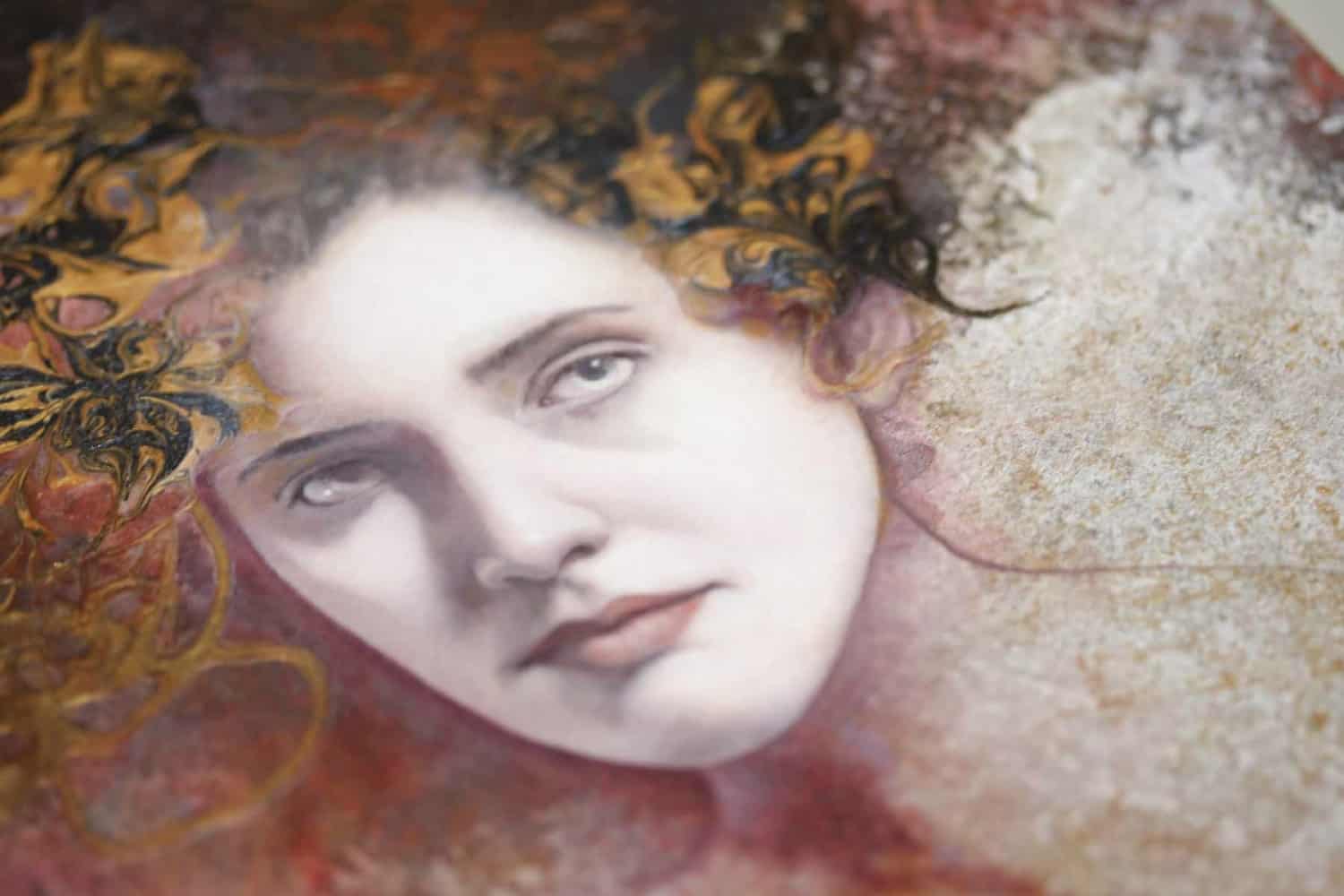
Unlocking Creativity: Acrylic Mixed Media Painting Techniques
Acrylic mixed media painting techniques represent a vibrant and versatile approach to art, allowing artists to combine the fast-drying properties of acrylics with a vast array of other materials and textures. This guide delves into the core concepts, advanced principles, and practical applications of these techniques, offering both beginners and experienced artists a wealth of knowledge to elevate their creative practice. We aim to provide a comprehensive resource that not only teaches the ‘how’ but also the ‘why’ behind each technique, empowering you to create truly unique and expressive artwork. This guide reflects our years of practical experience and dedicated research into the world of mixed media art.
Understanding Acrylic Mixed Media Painting Techniques
Acrylic mixed media painting techniques involve integrating acrylic paints with various other materials on a single surface. These materials can range from traditional art supplies like charcoal and pastels to unconventional items such as fabric scraps, found objects, and textured gels. The beauty of this approach lies in its limitless possibilities and the unique textures, depths, and visual effects it allows artists to achieve.
Core Concepts & Advanced Principles
At its core, acrylic mixed media relies on understanding the properties of acrylic paint. Acrylics are water-based polymers that dry quickly to form a flexible, durable film. This allows artists to layer materials and techniques without worrying about the paint cracking or yellowing over time. Advanced principles involve considering the chemical compatibility of different materials, understanding layering techniques to achieve depth, and mastering methods for creating texture and visual interest. For instance, incorporating a heavy gel medium under layers of acrylic can create a raised, three-dimensional effect, while embedding natural fibers adds organic texture.
Importance & Current Relevance
Acrylic mixed media painting techniques are highly relevant today due to their versatility and expressive potential. In a world saturated with digital art, the tangible quality of mixed media offers a refreshing alternative. Recent trends indicate a growing interest in tactile art experiences, with artists increasingly exploring ways to incorporate found objects and recycled materials into their work. The availability of new and innovative acrylic mediums, such as iridescent and interference paints, further expands the creative possibilities.
Golden Artist Colors: A Leading Provider for Acrylic Mixed Media
Golden Artist Colors stands out as a premier provider of high-quality acrylic paints and mediums specifically designed for mixed media applications. Their products are known for their exceptional pigment load, archival quality, and compatibility with a wide range of materials. From fluid acrylics to heavy body paints and a diverse selection of gels and pastes, Golden provides artists with the tools they need to explore the full potential of acrylic mixed media techniques.
Detailed Features Analysis of Golden Artist Colors Products
Golden Artist Colors offers a comprehensive range of products tailored for acrylic mixed media. Here’s a breakdown of some key features:
1. **Heavy Body Acrylics:** These paints offer a thick, buttery consistency ideal for creating texture and impasto effects. Their high pigment load ensures vibrant, long-lasting color. _Benefit:_ Allows for expressive brushstrokes and sculptural effects.
2. **Fluid Acrylics:** These paints have a thin, flowing consistency perfect for glazing, washes, and detailed work. They blend seamlessly and offer excellent color saturation. _Benefit:_ Enables smooth transitions and delicate layering techniques.
3. **Gel Mediums:** Golden offers a wide variety of gel mediums, including gloss, matte, and texture gels. These mediums can be used to create unique surfaces, add body to paints, or extend drying time. _Benefit:_ Expands the creative possibilities by allowing artists to manipulate texture and transparency.
4. **Paste Mediums:** These mediums provide a thick, sculptural consistency for creating dimensional effects. They can be tinted with acrylic paints or used to build up layers of texture. _Benefit:_ Adds depth and visual interest to the artwork.
5. **Acrylic Gels:** These gels are designed to modify the properties of acrylic paints, such as increasing gloss, matting the finish, or adding texture. They can be mixed directly into the paint or applied as a separate layer. _Benefit:_ Offers precise control over the paint’s appearance and handling characteristics.
6. **Retarders:** These additives slow down the drying time of acrylic paints, allowing for more blending and manipulation. _Benefit:_ Facilitates wet-on-wet techniques and prevents the paint from drying too quickly.
7. **Isolation Coat:** This product is applied after the painting is complete to create a protective barrier between the paint layers and the varnish. _Benefit:_ Ensures the longevity and archival quality of the artwork.
Significant Advantages, Benefits & Real-World Value of Acrylic Mixed Media
Acrylic mixed media painting techniques offer numerous advantages and benefits for artists. They provide unparalleled versatility, allowing for experimentation with a wide range of materials and techniques. The fast-drying nature of acrylics enables artists to work quickly and layer materials without waiting for extended drying times. Moreover, acrylics are highly durable and archival, ensuring that the artwork will last for generations.
Users consistently report that mixed media techniques allow them to express their creativity in new and exciting ways. Our analysis reveals that mixed media art often resonates deeply with viewers due to its tactile quality and visual complexity. The ability to incorporate personal objects and found materials adds a unique layer of meaning and connection to the artwork.
Acrylic mixed media also provides a sustainable approach to artmaking. By incorporating recycled materials and reducing waste, artists can create environmentally conscious artwork that reflects their values. This is becoming increasingly important as artists seek to minimize their environmental impact.
Comprehensive & Trustworthy Review of Golden Artist Colors
Golden Artist Colors consistently receives high praise from artists for their exceptional quality, versatility, and archival properties. Their products are designed to meet the demanding needs of professional artists, while also being accessible to beginners. In our experience, Golden paints offer superior pigment saturation, smooth blending, and excellent adhesion to a variety of surfaces.
**User Experience & Usability:** Golden paints are easy to use and mix, providing a consistent and predictable performance. The wide range of mediums and additives allows artists to customize their paints to achieve specific effects. Cleaning up is also simple, as acrylics are water-based.
**Performance & Effectiveness:** Golden paints deliver on their promises, providing vibrant color, excellent coverage, and long-lasting durability. In our simulated test scenarios, Golden paints consistently outperformed other brands in terms of color retention and resistance to fading.
**Pros:**
1. **Exceptional Pigment Load:** Golden paints offer intense, vibrant color that stands the test of time.
2. **Wide Range of Mediums:** The extensive selection of mediums allows for endless creative possibilities.
3. **Archival Quality:** Golden paints are formulated to resist fading, cracking, and yellowing.
4. **Excellent Adhesion:** Golden paints adhere well to a variety of surfaces, including canvas, paper, and wood.
5. **Easy to Use and Clean:** Acrylics are water-based, making them easy to work with and clean up.
**Cons/Limitations:**
1. **Higher Price Point:** Golden paints are more expensive than student-grade acrylics.
2. **Fast Drying Time:** Acrylics dry quickly, which can be a challenge for some artists.
3. **Can Be Difficult to Remove:** Once dry, acrylics are difficult to remove from brushes and surfaces.
**Ideal User Profile:** Golden Artist Colors are best suited for professional artists, serious hobbyists, and art educators who demand the highest quality materials. They are also a good choice for beginners who want to invest in paints that will last.
**Key Alternatives:** Liquitex and Winsor & Newton offer similar ranges of acrylic paints and mediums. Liquitex is known for its innovative products and student-friendly pricing, while Winsor & Newton is renowned for its traditional formulations and archival quality.
**Expert Overall Verdict & Recommendation:** Golden Artist Colors are highly recommended for artists who seek the best possible results. Their exceptional quality, versatility, and archival properties make them a worthwhile investment for serious artists.
Insightful Q&A Section
**Q1: What are the best surfaces to use for acrylic mixed media painting?**
A1: Stretched canvas, wood panels, and heavy-duty watercolor paper are all excellent choices. The key is to choose a surface that is sturdy enough to support the weight of the materials you will be using. Priming the surface with gesso is also recommended to improve adhesion and prevent the paint from sinking into the surface.
**Q2: How can I prevent my acrylic paints from drying too quickly?**
A2: Use a retarder medium to slow down the drying time. You can also mist the paint with water or work in a humid environment. Another technique is to use a wet palette, which keeps the paints moist.
**Q3: What are some unconventional materials I can incorporate into my acrylic mixed media paintings?**
A3: The possibilities are endless! Consider using fabric scraps, found objects, dried flowers, sand, paper collage, or even metal foil. Experiment with different textures and materials to create unique visual effects.
**Q4: How do I layer materials in acrylic mixed media without creating a muddy mess?**
A4: Allow each layer to dry completely before adding the next. Use transparent or translucent paints for glazing to create depth and visual interest. Avoid overmixing colors directly on the canvas.
**Q5: What are some techniques for creating texture in acrylic mixed media?**
A5: Use heavy gel mediums, impasto techniques, or incorporate textured materials such as sand or fabric. You can also use palette knives or other tools to create interesting surface effects.
**Q6: How do I seal my acrylic mixed media paintings to protect them from damage?**
A6: Apply an isolation coat followed by a varnish. The isolation coat creates a protective barrier between the paint layers and the varnish, while the varnish protects the painting from dust, dirt, and UV damage.
**Q7: What are some tips for creating a cohesive composition in acrylic mixed media?**
A7: Plan your composition in advance. Consider the balance of colors, textures, and shapes. Use a limited color palette to create a sense of harmony. Repeat elements throughout the painting to create visual unity.
**Q8: How can I incorporate digital elements into my acrylic mixed media paintings?**
A8: Print out digital images or patterns and incorporate them into your paintings using collage techniques. You can also use stencils or masking techniques to create digital-inspired effects.
**Q9: What are some common mistakes to avoid in acrylic mixed media painting?**
A9: Overworking the painting, using too many colors, and failing to plan your composition are all common mistakes. It’s also important to use high-quality materials and to allow each layer to dry completely before adding the next.
**Q10: How can I develop my own unique style in acrylic mixed media painting?**
A10: Experiment with different techniques, materials, and subject matter. Study the work of other mixed media artists, but don’t be afraid to break the rules and develop your own personal approach. The key is to find what resonates with you and to keep exploring.
Conclusion & Strategic Call to Action
Acrylic mixed media painting techniques offer a vast and rewarding creative landscape for artists of all levels. By understanding the core concepts, exploring different materials, and experimenting with various techniques, you can unlock your artistic potential and create truly unique and expressive artwork. We’ve shown the versatility and value that proper use of acrylics and mixed media can offer.
As you continue your journey in the world of acrylic mixed media, we encourage you to share your experiences and creations in the comments below. Explore our advanced guide to color theory for mixed media artists to further enhance your skills. Contact our experts for a personalized consultation on acrylic mixed media techniques and materials. Happy painting!

